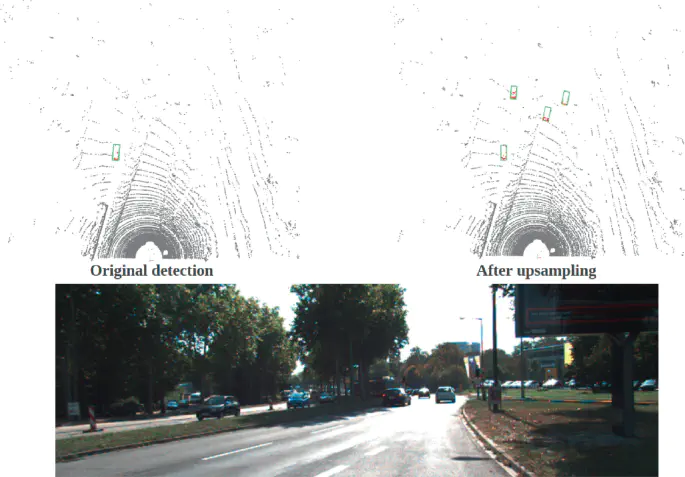
Abstract
Lidar-based 3D object detection has been widely adopted for autonomous vehicles. However, adverse weather conditions, such as rain, pose significant challenges by reducing both detection distance and accuracy. Intuitively, one could adopt upsampling to improve detection accuracy. Nevertheless, the task of increasing the number of target points, especially the key detection points crucial for object detection, remains an open issue. In this paper, we explore how an additional data upsampling pre-processing stage to increase the density of the point cloud can potentially benefit deep-learning object detection. Unlike the state-of-the-art upsampling approaches which aim to improve point cloud appearance and uniformity, we are interested in object detection. The object of interest, rather than full scenarios or small patches, is used to train the network - we call it object-aware learning. Additionally, data collection and labelling are time-consuming and expensive, especially for rain scenarios. To tackle this challenge, we propose a semi-supervised upsampling network that can be trained using a relatively small number of labelled simulated objects. Lastly, we verify a well-established sensor/rain simulator, using a publicly available database. The experimental results on a database generated by this simulator are promising and have shown that our object-aware networks can extend the detection range in rainy scenarios and can achieve improvements in Bird’s-eye-View Intersection-over-Union (BEV IoU) detection accuracy.